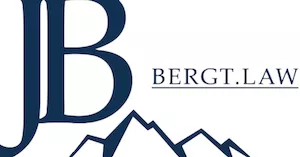- within International Law topic(s)
- in Europe
- in Europe
- in Europe
- within International Law and Technology topic(s)
- with readers working within the Banking & Credit industries
In an era where trade policy radiates far beyond customs codes into valuation models, plant-loading schedules, and even reputational risk registers, the United States' latest reciprocal-tariff action has produced a counter-intuitive but legally dispositive data point—namely, that Switzerland is currently listed at 39% while Liechtenstein is listed at 15%—a split that would already be noteworthy under ordinary circumstances, and that becomes genuinely strategic once you remember that Liechtenstein and Switzerland have for a century operated a common customs and economic space, administered primarily through Swiss authorities, yet are being treated differently by a U.S. executive instrument that allocates rates on a country-by-country basis.
On July 31, 2025, the White House issued an order “Further Modifying the Reciprocal Tariff Rates,” which (i) sets out trading-partner specific ad valorem additions in Annex I (where Switzerland appears at 39% and Liechtenstein at 15%), (ii) takes effect seven days after issuance for entries (with a narrow in-transit carve-out through October 5, 2025 for shipments already loaded on the final leg), and (iii) introduces an explicit anti-transshipment rule under which goods determined by U.S. Customs and Border Protection to have been routed to evade the applicable rates face a 40% additional ad valorem duty plus penalties, without mitigation—details that transform boardroom theory into operational imperatives.
To anyone steeped in the Switzerland–Liechtenstein Zollanschlussvertrag (customs union treaty, 1923, in force since 1924), this is jarring but not legally inconsistent: Liechtenstein is integrated into the Swiss customs territory and authorizes Switzerland to represent it in trade and customs negotiations with third countries; still, the U.S. order assigns tariff adjustments per state, and therefore, as a matter of U.S. law and administration, may (and here does) differentiate between two members of a common customs area, which means corporate planning must distinguish between the customs-union reality in Europe and the tariff-setting sovereignty of the United States.
A further nuance that will trip up anyone relying on heuristics rather than texts: for European Union goods, the order does not post a single number; instead it tops up items whose Column 1 (General) duty under the HTSUS is below 15% so that their sum reaches 15%, while goods whose Column 1 rate is already at least 15% are not subject to an extra ad valorem addition—a design choice that underlines just how granular, and how origin- and heading-sensitive, the new environment has become for European supply chains targeting the U.S. market.
What this actually means for Swiss (and Liechtenstein) ventures
First, assumptions are a liability: a common customs territory does not guarantee identical treatment by a third-country unilateral tariff regime; rules of origin, substantial transformation, valuation, and the specific Annex I assignment control, and they will be audited vigorously under the new transshipment provision. Put differently, the legal fiction that “customs-union alignment equals U.S. tariff alignment” is now unsafe, and boards should demand line-by-line testing of SKUs, processes, and routings rather than generic slideware.
Second, the century-old customs union still frames your day-to-day operating mechanics in Europe—Swiss administration, common border regime, and documentation pipelines—yet the United States will continue to apply the rates it has assigned to each country nameplate, which is why playbooks must hold two truths at once: operational integration in the Alpine customs space, tariff differentiation at U.S. entry.
Third, timing is a cost center now: the order's entry-into-force clock (and the carve-out for goods already loaded on the final mode before the effective timestamp) can make a measurable difference to margins; a one-week planning miss on ocean cut-offs can reprice an entire quarter's shipments. Compliance teams should lock logistics calendars to the order's timestamps and ensure finance understands how “on board before” interacts with the October 5, 2025 deadline for the exception window.
Fourth, the uncomfortable, yet necessary, point: because Liechtenstein is at 15% while Switzerland is at 39%, some will inevitably ask whether they can “re-stage” or “touch” goods to migrate treatment; the order pre-answers that question by imposing punitive duties and penalties for transshipment to evade the rates, which is to say that bypassing is not strategy—it is non-compliance with a paper trail—whereas lawful re-engineering (e.g., genuine substantial transformation, documented changes in origin-conferring processes, accurate HS classification) remains assessable on its merits and, when appropriate, advance-ruling-ready. This is the line that serious counsel must draw and defend.
Why boards should treat this as a governance priority (not a “trade-ops tweak”)
Because deviations of this magnitude move EBITDA, reprice U.S. bids, alter make-versus-buy and plant-loading decisions, and can even feed back into transfer-pricing and customs valuation linkages, they belong on the risk register and in the audit committee briefings; moreover, investors and lenders will soon ask whether your U.S. exposure was quantified, whether mitigation options were vetted within the four corners of the law, and whether the board has reserved capex and working capital buffers for tariff volatility scenarios. (And yes, communications matters here: explaining to counterparties why two members of a customs union attract different U.S. rates requires precision, not platitudes.)
What to do
- Re-baseline exposure by HS code and origin narrative; model margin sensitivity at 39% and 15% for U.S.-bound flows; and explicitly distinguish “EU-top-up to 15%” mechanics from the Switzerland/Liechtenstein country entries.
- Re-document origin (substantial transformation, value-add, supplier declarations), and obtain advance rulings where borderline; treat documentation as a defensive asset, not an afterthought.
- Sync logistics to the order's timestamps (effective +7 days; exception runs to Oct 5, 2025 for already-loaded shipments) to avoid accidental re-pricing at the pier.
- Refresh governance: brief the board; hard-wire trade-compliance KPIs; and ensure crisis-comms language is ready for questions about customs-union versus U.S. tariff treatment.
A word on Liechtenstein's “dual positioning” (and why it matters)
Liechtenstein's legal architecture is unusual in Europe: a customs union and trade-representation mandate with Switzerland under the 1923 treaty, operating alongside EEA membership since 1995, such that technical rules, product standards, and market access often blend Swiss-administered mechanics with EEA obligations—an arrangement that works smoothly for European trade but still leaves third-country measures, such as the U.S. reciprocal-tariff regime, free to assign their own rates; in other words, the institutional structures remains Swiss-centric, yet the tariff number at U.S. entry is set in Washington.
For readers seeking official, practice-ready guidance on how the country-specific U.S. tariffs actually bite at the point of entry, the Liechtenstein Office of Economic Affairs has issued a memorandum that, in sober terms, reminds exporters that for U.S. purposes the only rules that determine origin—and thus the applicable 39% (CH) vs. 15% (LI) reciprocal rate—are the U.S. non-preferential origin (NPU) rules, which may diverge from Swiss/Liechtenstein concepts; that the U.S. importer (or the party liable to CBP) bears responsibility for the declaration and will rely on granular supplier/manufacturer information; that under the Swiss–Liechtenstein customs union there is no official “origin Liechtenstein” certificate within CH/LI NPU (hence no official attestation can be issued), although indicating “Liechtenstein” on commercial invoices can be appropriate where all origin-conferring operations occurred on LI territory; and, crucially, that the export determination in CH/LI and the U.S. import determination are legally independent—meaning the origin you document for export will not automatically be the origin the U.S. authorities accept for tariff purposes—so best practice is to pre-align with the U.S. buyer on NPU analysis, maintain robust files, and, where needed, obtain advance clarity, a process which has to be evaluated on a case-by-case, compliance-first basis for Swiss and Liechtenstein ventures.
Sources: Information sheet Office of Economic Affairs: Country of origin in trade with the USA; Swiss Federal Department of Foreign Affairs. (n.d.). Bilateral relations Switzerland–Liechtenstein. Federal Department of Foreign Affairs, Bern; Executive Office of the President of the United States. (2025, July 31). Further modifying the reciprocal tariff rates [Presidential Proclamation].
Key Findings & Core Statements (Executive Summary)
- Rates diverge notwithstanding a shared customs area: The July 31, 2025 U.S. order lists Switzerland at 39% and Liechtenstein at 15%, effective seven days after issuance, with a limited in-transit exception; transshipment to evade triggers a 40% duty and penalties.
- Customs union ≠ identical U.S. treatment: The 1923 treaty integrates Liechtenstein into the Swiss customs territory and authorizes Swiss representation in trade matters, but the U.S. assigns rates per country, hence the current split.
- EU goods have a “top-up” mechanic: Items with a Column 1 rate below 15% are topped up so the sum reaches 15%; at or above 15%, no added ad valorem applies under this order—important for EU-sourced lines in mixed supply chains.
- Compliance-first restructuring is legitimate: Substantial-transformation changes and documentation-rich origin strategies can be assessed and, if sound, implemented; “workarounds” that amount to evasion are unlawful and penalized.
- Liechtenstein's dual framework endures: A century-old customs union plus EEA membership yields efficient European operations, while U.S. tariff policy remains sovereign and partner-specific, demanding case-by-case planning.
The content of this article is intended to provide a general guide to the subject matter. Specialist advice should be sought about your specific circumstances.


